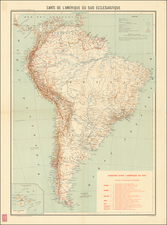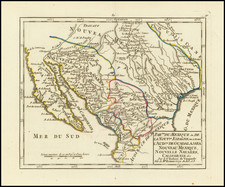Fine example of the 1796 edition of Speer's General Chart of the West Indies published by Robert Wilkinson in London.
Fine large scale English sea chart of the Gulf of Mexico, Caribbean and contiguous lands from Florida and the Gulf Coast to South America.
Speer offers a rich tapestry of information throughout the map, including the American Southeast, present-day Texas, Mexico, Central America, and upper South America in addition to the entire Gulf of Mexico and Caribbean basin. The chart is highly detailed and contains a great deal of practical information. Speer pays careful attention to the routes and hazards of navigation including extensive soundings (particularly along the western coast of Florida), channels, trade winds, the course of the Gulf Stream, and the route of the Spanish Gold Fleet. Inland, the chart shows boundaries, Indian tribal territories, rivers, forts, and trails.
The United States boundaries reflect the 1796 Pinckney's Treaty, extending to the Mississippi River in the west and south to northern Florida. Pinckney's Treaty, also known as the Treaty of San Lorenzo or the Treaty of Madrid, defined the boundaries of the United States, gave the U.S. navigation rights on the Mississippi River, and established intentions of friendship between the United States and Spain.
The Spanish possessions west of the Mississippi are left largely blank, with Ticas (Texas), Wandering Indians, and A Vast Tract of Unknown Land noted. Political boundaries, cities, forts, Indian tribal territories, and topographical details are well depicted. The waters are filled with soundings, navigational hazards, arrows identifying the direction of trade winds, and the routes of the Spanish gold fleet.
The chart includes a striking dedication cartouche to George Augustus Frederick, Prince of Wales, who would later become King in 1820.
The map includes an endorsement by John Pownall, Secretary to the Plantation Office, certifying that the chart incorporates the "latest and most accurate surveys."
A table at far right lists the colonial possessions of the English, French, Spanish, Dutch and Danish, and gives direction as to how they should be colored on the chart.
The map was first published in 1774, with a second state by Robert Wilkinson, with an "Honorary Gold Medal" seal given to Speer and engraved just above South America.
Captain Joseph Smith Speer was an officer in the Royal Navy. His most famous work, the now extremely rare West-India Pilot, contained 13 maps of the region, published in 1766, followed by an extended 26-map edition in 1771.









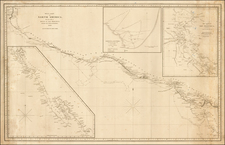
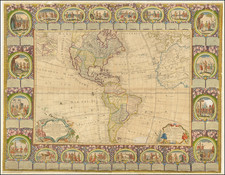
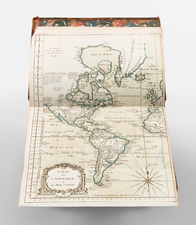
![[North St. Peterburg News -- Tamiami Air Line and Flying Field]](https://storage.googleapis.com/raremaps/img/small/94319.jpg)
